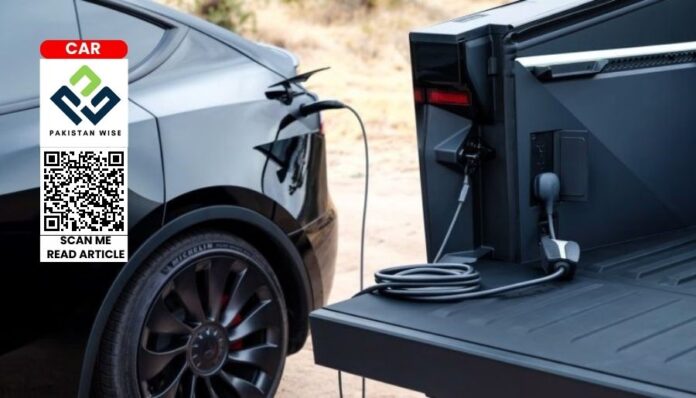Tesla’s long-awaited Cybertruck delivery heralds the arrival of bidirectional charging, a feature anticipated by enthusiasts for quite some time. While the company previously hinted at this technology, its commitment seemed uncertain. During Tesla’s Investor Day in March, VP Drew Baglino mentioned the potential of bidirectional charging within two years. However, CEO Elon Musk tempered expectations, expressing doubts about its appeal without a Powerwall, citing the inconvenience of leaving one’s house powerless upon unplugging the car.
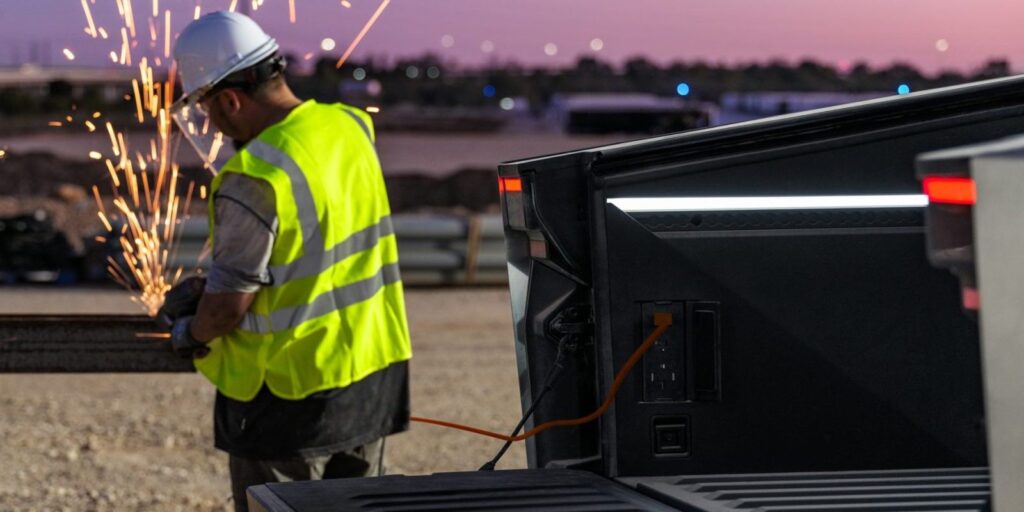
Surprisingly, within nine months of this cautious statement, Tesla has unveiled a vehicle equipped with bidirectional charging capabilities. The Cybertruck’s release hints at a potential future where more Tesla models will embrace this functionality, promising an evolution in their branding strategy.
During the recent Cybertruck delivery event, specifics remained scarce, compelling enthusiasts to scour the company website for details. One notable revelation absent from the event but found on the website was the introduction of ‘Powershare.’ This stealthy addition adds another layer of intrigue to Tesla’s technological offerings.

Tesla’s Powershare initiative introduces a groundbreaking bidirectional charging system encompassing V2L, V2H, and V2V functionalities.
The V2L aspect enables the vehicle to supply power through a range of outlets, including two 120 V 20 A outlets in both the cabin and bed, along with a 240 V 40 A outlet in the bed. This versatility serves diverse needs like operating tools, supporting camping activities, or serving as a mobile power source for emergencies.
Initial leaks hinted at the Cybertruck’s bidirectional charging capabilities, suggesting a 12 kW output capacity. However, recent confirmation from Tesla reveals that the Cybertruck consolidates a continuous power output of 9.6 kW across its five outlets. Comparatively, while the F-150 Lightning offers more outlets, its maximum draw aligns with the Cybertruck at 9.6 kW when equipped with the upgraded Pro Power Onboard package (and 2.4 kW without).
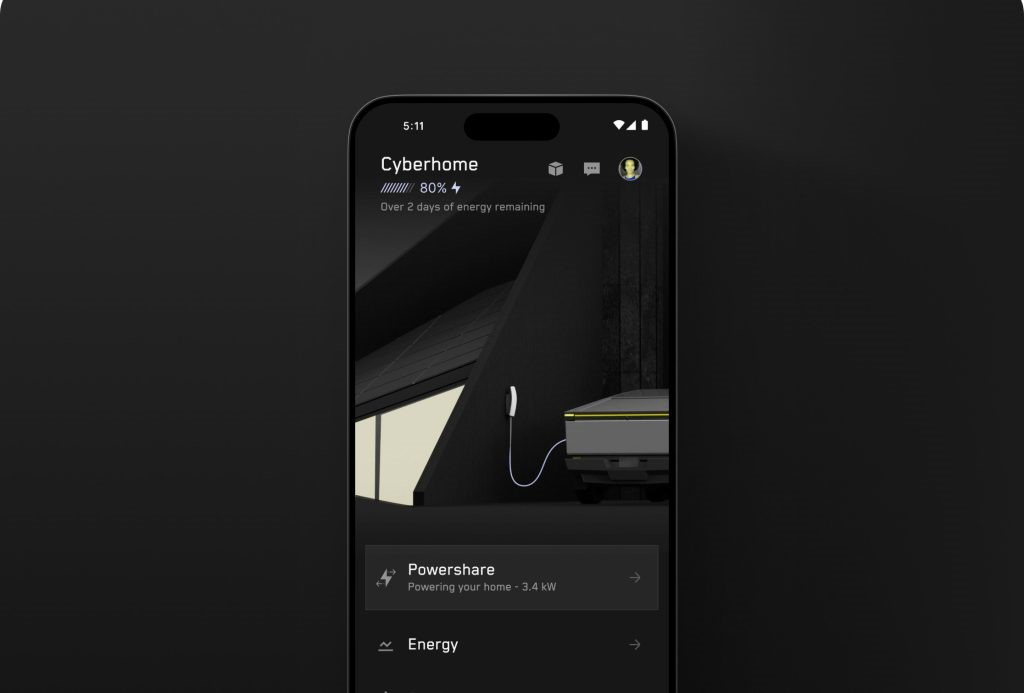
Distinctly, the Cybertruck distinguishes itself with an 11.5 kW output potential through its V2H system. This feature empowers the Cybertruck to serve as a backup power source for homes during power outages or unstable grid conditions.
Enabling home power through the Lightning necessitates an added $3,900 unit alongside installation expenses. Similarly, Tesla’s approach involves supplementary components—like the Universal Wall Connector ($595) and Gateway ($1,800) devices, with the potential inclusion of Tesla’s Backup Switch, contingent on your utility setup.
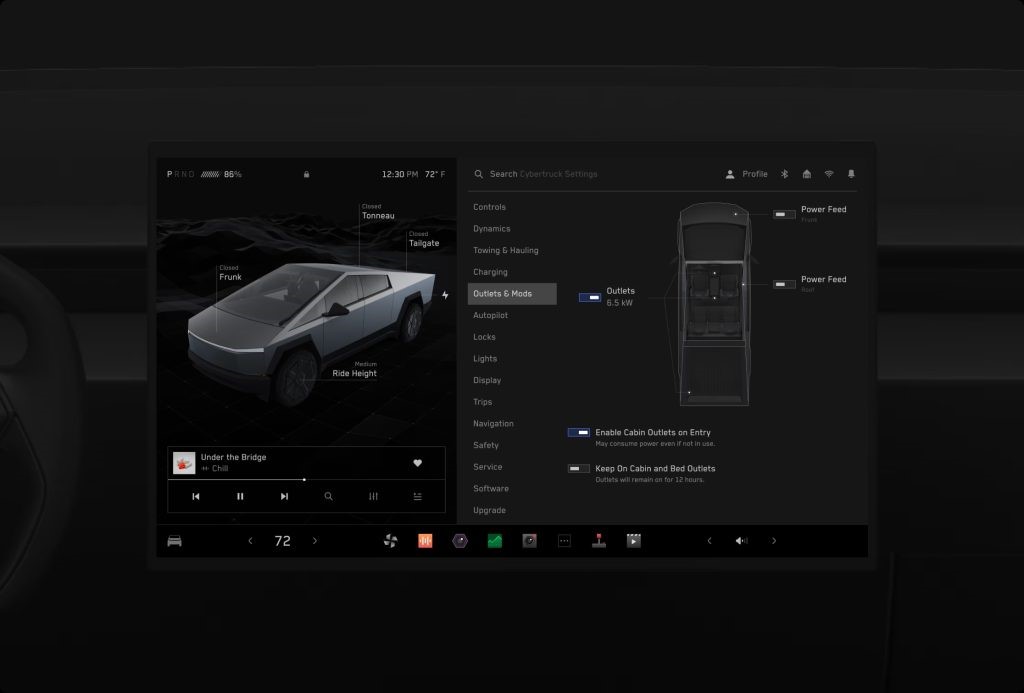
However, the pivotal distinction lies in the presence of the Tesla Powerwall. With Powerwall and Tesla’s Wall Connector in place, households are poised to employ Powershare sans extra apparatus. Notably, while Tesla refers interchangeably to its Wall Connector and Universal Wall Connector, the precise compatibility—whether one or both are needed, production year specifics, or other requisites—remains unclear.
Related Article: Tesla’s Latest Software Update 2023.26.9 Unveils a World of Innovation and Convenience
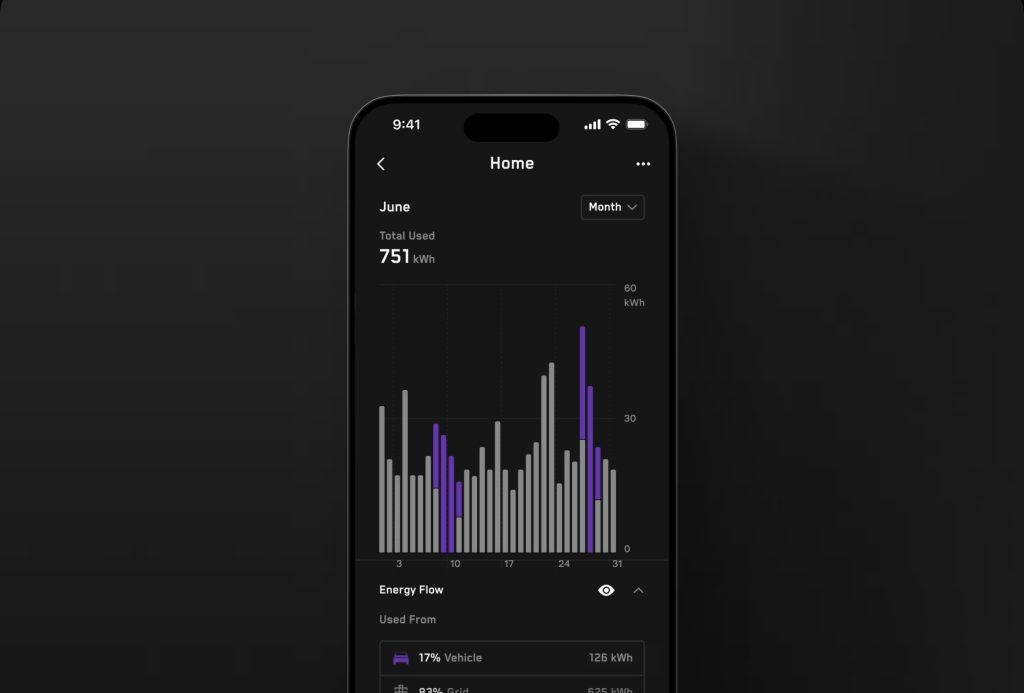
Tesla’s integration of bidirectional charging with its Powerwall is a game-changer. For existing Powerwall users, this means seamless compatibility without any adjustments required in their homes. While Lightning users might balk at an additional $4,000+ expense for power outage resilience, Powerwall owners have already invested in a solution that aligns perfectly with the car’s bidirectional charging capability.
Effectively, this innovation transforms a 13.5 kWh Powerwall into an astonishing 136.5 kWh powerhouse when combined with the Cybertruck’s 123 kWh battery capacity. Tesla claims that Powershare can sustain a home for “over three days” assuming a daily consumption of 30 kWh – a substantial leap. In personal terms, a household using 10 kWh daily could potentially benefit for around two weeks on this setup.

Moreover, the Cybertruck boasts a notably higher continuous output capacity (11.5 kW) compared to the Powerwall’s 5 kW limit. This development significantly elevates the potential of Vehicle-to-Home (V2H) technology, which was once considered niche. With a pre-established market of V2H-capable homes, Tesla is poised to witness a substantial surge in the utilization of this groundbreaking capability.
Related Article: Tesla launches Supercharger congestion fee at $1 per min at 90% charge
Tesla’s Powershare feature extends beyond simple vehicle-to-vehicle (V2V) capabilities; it enables the Cybertruck’s battery to power up another electric vehicle. A similar concept was demonstrated by Ford with the Lightning, showcasing an adapter allowing their truck to charge Tesla models. The Cybertruck’s NEMA 14-50 plug, a prevalent standard for EV charging, facilitates compatibility with various vehicles, including those equipped with Tesla’s Mobile Connector kit.
Presently exclusive to the Cybertruck, Powershare’s standalone branding implies future integration into other Tesla models. While officially limited to the Cybertruck for now, Tesla’s website hints at potential expansions without specifying a definitive timeline beyond this initial release.

